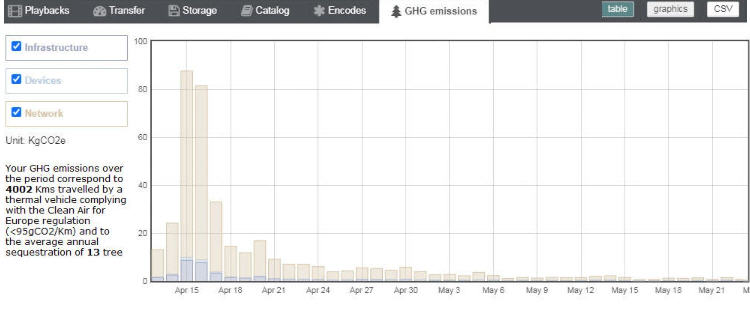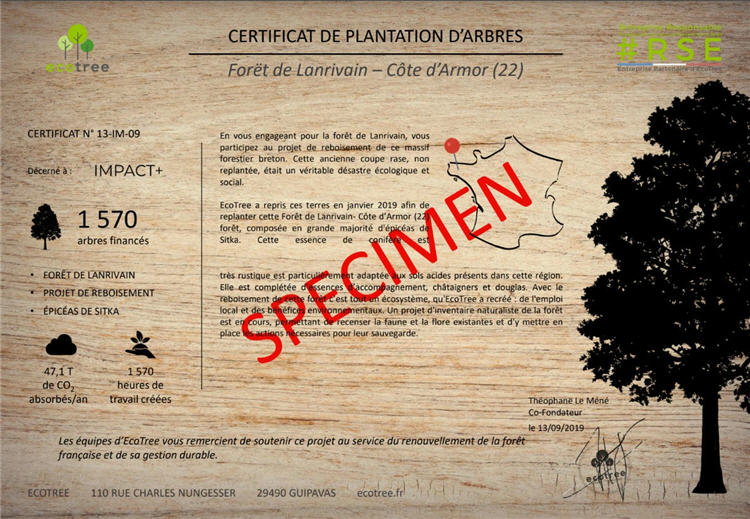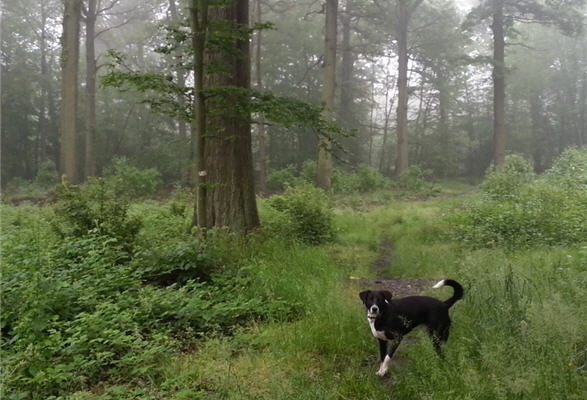Responsible Streaming is an approach that has three objectives :
- to measure GHG emissions from streaming
- to reduce these emissions
- to contribute to the sequestration of carbon
After having explained how to measure the greenhouse gas emissions linked to streaming content and then the good practices to reduce them, we explain here our choice to contribute to the sequestration of the carbon we have measured.
By raising its customers’ awareness of responsible streaming, Streamlike has made two major commitments:
- to offer technical solutions and advice to reduce GHG emissions even if it is not in the economic interests of the company.
- to implement a carbon sequestration solution for all measured emissions, without any financial participation from our customers.
In other words, and with due caution, Streamlike guarantees all its customers a fully carbon-free digital activity and can justify this by issuing a certificate.
There are two types of solutions for offsetting GHG emissions:
- the purchase of carbon credits internationally, which complies with the laws of the financial markets. It turns out that this system has not been able to significantly reduce or even curb emissions due to a fall in the price of carbon.
- the creation of carbon sinks, generally through the planting of trees.
Our choice of reforestation
We have chosen to plant forests through EcoTree for the following reasons:
By purchasing private wasteland, Ecotree becomes the owner of the soil of the forests it manages in France and its clients are the owners of the trees planted.
Through this carbon sink creation program, Streamlike makes itself the owner of a forest of trees planted on behalf of its clients.
Ecotree plants sustainable forests, in uneven-aged forests. This allows the production of diverse and quality wood. The forest is more resistant to diseases and storms. Biodiversity is favoured (fungi, animals, plants) as well as soil enrichment.
EcoTree practices thinning and intermediate cuts, never clear cutting, for natural regeneration.
No chemical products are used (herbicides, phytosanitary products, fertilizers).
Baudouin Vercken, co-founder of EcoTree:
Cared for from planting to cutting, the tree is then sold to partner sawmills. These mills are themselves guarantors of responsible values, and the wood processing circuit takes place on French territory.
The forests are PEFC (certification of sustainable management), have a document of sustainable management (PSG, RTG, or CBPS) and are insured (at XLB Insurance).
One third of the amounts paid to Ecotree are devoted to planting, one third to forest management and the last third to administration.
In its reforestation strategy, EcoTree meets four criteria:
1 – Economic additionality: Without financing, the project could not exist. The creation of carbon sinks is only done through new plantations or by reforestation in an existing forest. The carbon sequestration of trees already standing before financing is never taken into account.
2 – Measurability: EcoTree, in partnership with Lorne Forestry and Bureau Veritas are working to estimate the carbon that is and will be sequestered by each of its forests, based on recognized production tables and field studies. These quantification methods correspond to Ademe figures (30 kg of CO2 / year / tree on average).
3 – Permanence: The permanence of trees is guaranteed throughout their life cycle and sequestration is ensured over time. This makes it possible to take into account the total carbon sequestration capacity of a tree throughout its life. The ex-ante method considers that a tree sequesters on average 500kg of CO2 over 20 years.
4 – Uniqueness: the volumes of CO2 sequestered by a tree during its life are allocated only to the sole owner of this tree, at the origin of its plantation.

Under the principles of additionality and uniqueness, carbon emissions cannot be offset in real time, but over a long period of time:
- A tree sequesters very little CO2 when planted. It only reaches its average sequestration rate after a few years and mature trees are not planted.
- The sequestration of each tree is counted only once, in the year it is planted. We will therefore consider its sequestration capacity over 20 years, bearing in mind that it will not be cut down until after 30 to 50 years.
In other words, if 500 kg of emissions were to be instantly offset, 17 adult trees would have to be planted at full CO2 absorption capacity, without taking into account what they sequestered from the time they were planted until they were cut down. It does not make sense. Therefore, we plant one tree to offset 500 kg of emissions, we count it only once and maintain it until it is cut down.
Reforestation is a long-term method of carbon offsetting. Every year, forests are planted for the next 30 to 50 years.
Carbon absorption of a tree
To grow and create their substance, trees need carbon, which they absorb from the atmosphere and transform into matter through the mechanism of photosynthesis. Throughout their lives, trees store carbon in their foliage, branches, roots and soil.
The CO2 absorption capacity of a tree can vary enormously, depending on the tree species, its exposure to light, the growing season, temperature changes in the environment, the quantity of water available and the quality of the soil.
In France, with regard to the species planted, experts agree on an average value of 30 kg CO2 absorbed per year and per tree, i.e. approximately 0.5 tonnes over 20 years (ex-ante method).
Carbon generation through digital activity
In collaboration with the Shift Project, Streamlike has set up a measurement of greenhouse gas emissions by users of the platform. The method is described here: https://www.streamlike.com/en/blog/measurement-of-greenhouse-gas-emissions-linked-to-streaming
Here is an example of GHG emissions measurement for a Streamlike platform client

Over the period under consideration, emissions were 380 KgCO2e, which is what 13 trees absorb on average in one year.
A graph shows the daily detail of emissions and the different contributors.

The legend of the graph reads :
“Your GHG emissions over the period correspond to 4002 Kms travelled by a thermal vehicle complying with the Clean Air for Europe regulation (<95gCO2/Km) and to the average annual sequestration of 13 tree(s).”
Each year, Streamlike will send its clients a certificate reminding them of the number of trees planted in their name, the quantity of carbon sequestered, the location and the history of the forest.
Example of certificate :

